Early Warning for injuries

One of our main concerns as riders is the possibility of our horse getting sick or injured.
The SaddleClip monitors the gait pattern of your horse. It helps you identify changes before you can even feel them.
The Equestic SaddleClip monitors Rhythm, Landing and Push-off . As soon any of those show any significant changes, signs of potential injuries, the App will warn you.
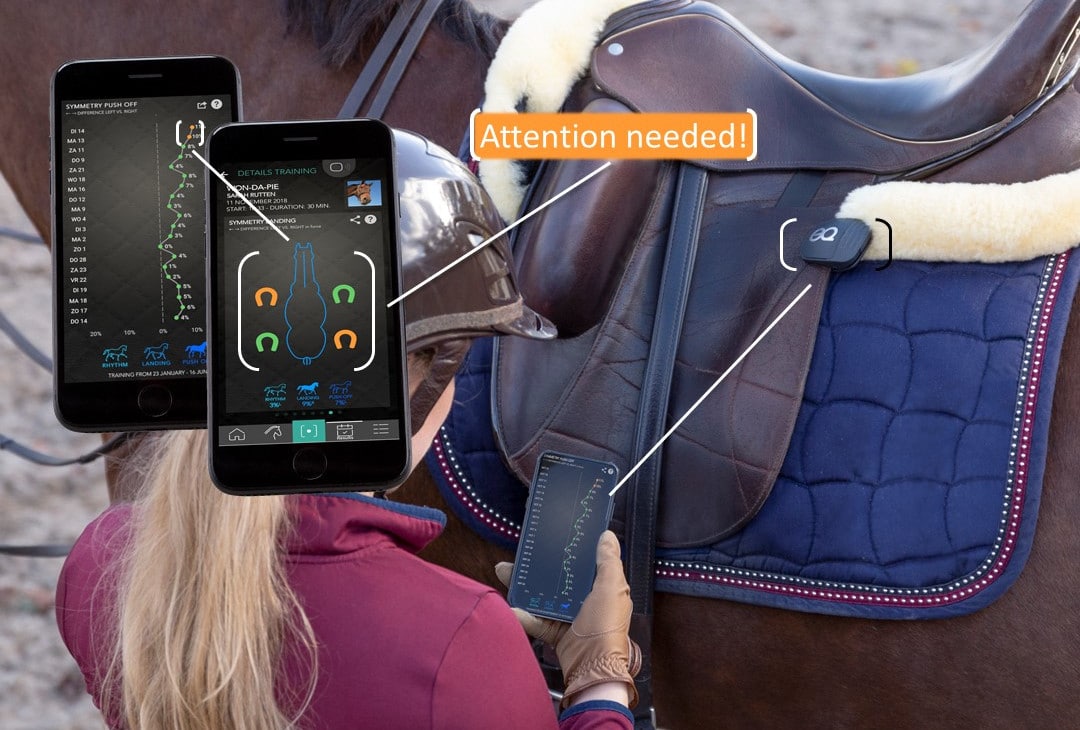
One of our main concerns as riders is the possibility of our horse getting sick or injured.
The SaddleClip monitors the gait pattern of your horse. It helps you identify changes before you can even feel them.

The Equestic SaddleClip monitors Rhythm, Landing and Push-off . As soon any of those show any significant changes, signs of potential injuries, the App will warn you.
Research shows that horse owners often do not realize that their horse is irregular. In a UK study, irregularities were found in 47% of the horses, while the owners had reported that their horse was regular.
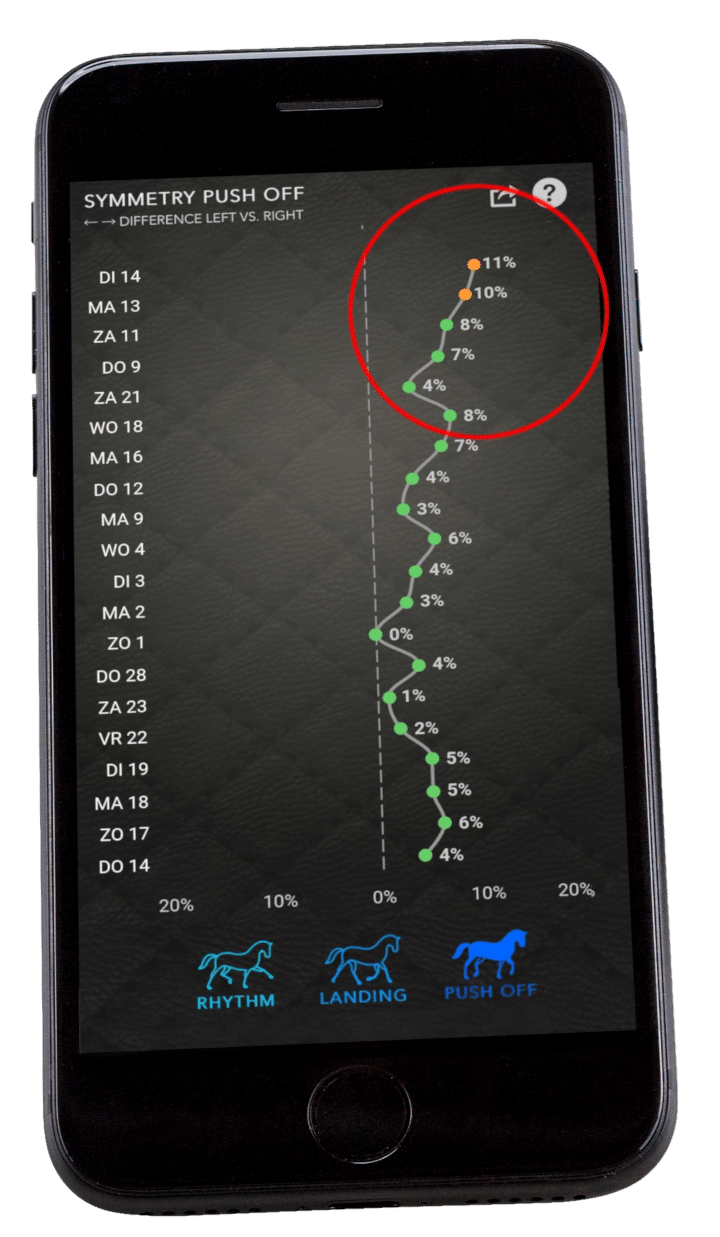
The Equestic SaddleClip can recognize an irregular rhythm or an asymmetry in trot, which is often a sign of an injury, long before the average rider can see or feel the change. The SaddleClip can already detect a 1% change.
By having this information, potential injuries can be identified faster, so that horses can receive rest and treatment at the most appropriate time and any worsening is prevented.
Most common problems and injuries
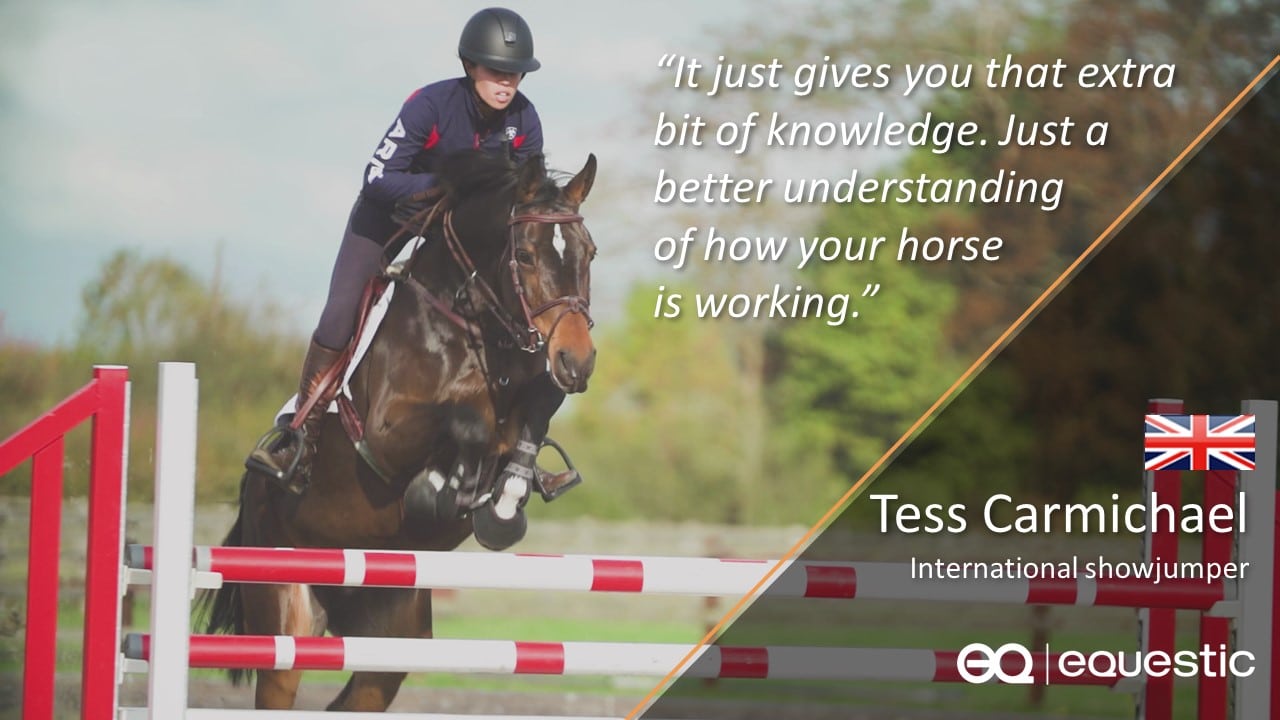
Jumpers, Hunters and Eventers have a higher risk of causing injuries on the forelimbs as they land. Often creating issues with the deep digital flexor tendon (DDFT) either through inflammation or as an actual tear in the tendon. Suspensory ligament injuries as well as issues in the navicular bone and ligaments in the hoof often occur as well. Due to the nature of their work these horses are highly prone to foot injuries, hind leg injuries and knee swelling.
Dressage horses more often experience injuries more related to repetitive stress. The nature of the sport does create injuries to the legs, neck and spine. The horse must hold its own weight and injuries can often be joint and muscle issues and lead to degenerative joint disease (arthritis) in the fetlocks, hocks, neck and spine.
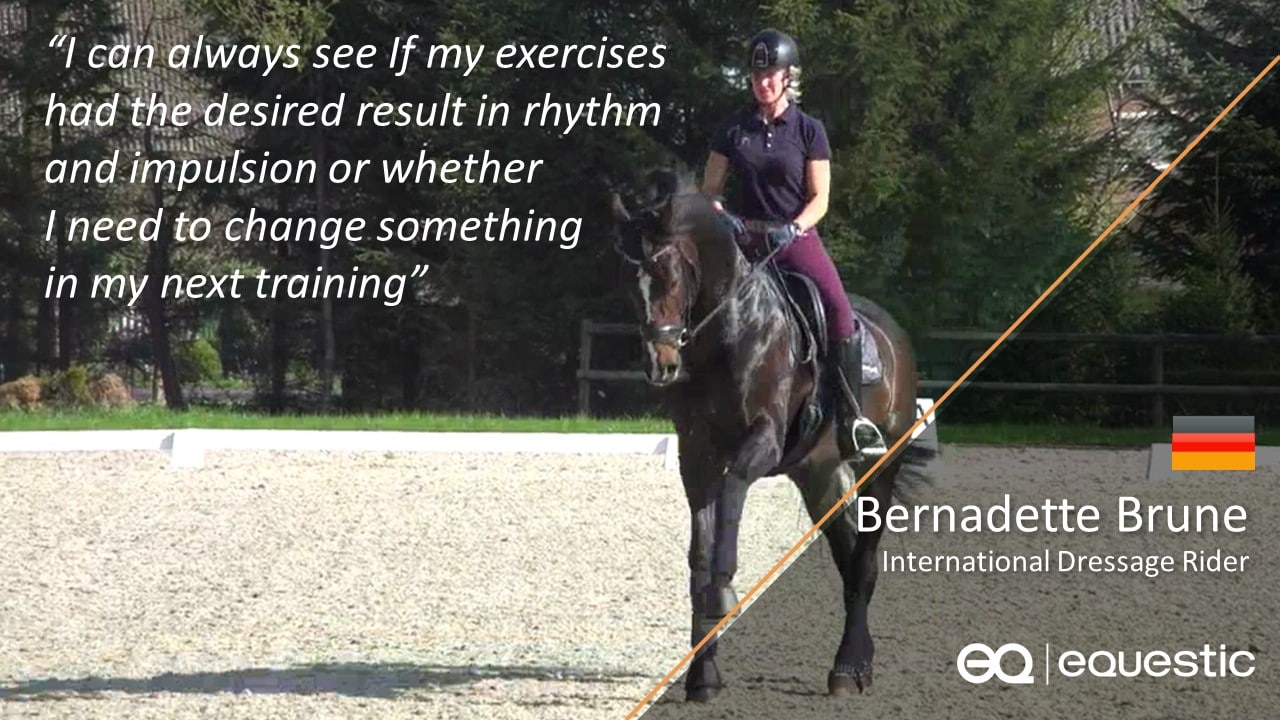
The Equestic SaddleClip provides insight into changes in your horse’s symmetry for Push-off, Landing and Rhythm. Significant changes in these patterns can indicate early stages of lameness or strain. For more details read the examples below.
In Depth
Below we dive a bit deeper into a few common sport horse injuries and the appropriate steps that will help your horse stay healthy and happy.
In all cases we advise to always consult a professional Veterinarian or Physiotherapist for advice and guidance as these are merely general guidelines and not specific treatment plans.
Joint Inflammation

Inflammation, otherwise known as “synovitis,” can occur in knee, fetlock, coffin joints or the hock joint, and is one of the most common sport horse injuries diagnosed today. The injury is likely due to a change in work level, intensity, or motion that the horse isn’t accustomed to. Your horse will appear to be sore or stiff at the start of work if he or she is suffering from inflammation.
Typically the Equestic SaddleClip will pick up very irregular patterns for Rhythm and Symmetry and they will show in the Equestic App.
The first and common way to treat this injury is to give your horse some rest. Usually at least seven to ten days off. When not acted upon timely, it can result in longtime recovery or even permanent damage.
Suspensory Ligament Injuries
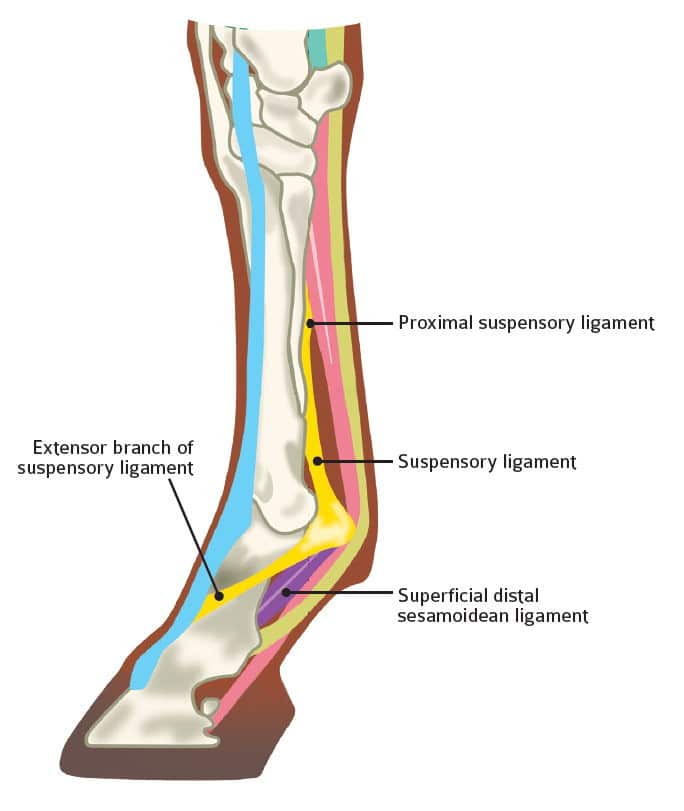
The suspensory ligament helps the ankle joint when it’s holding up weight and when it returns to normal once the weight is released. If a horse puts too much weight on the leg, the suspensory may give out resulting in lameness. Repeated stress will only prolong healing, so recognizing the injury and giving your horse rest is essential.
Spotting the injury can be difficult because it is often barely noticeable. The horse will try to shift weight away from the injured leg and to the other side.
The Equestic SaddleClip can pick up on that small change and ‘Symmetry of Landing’ will show bigger deviations in the Equestic App
Starting to hand-walk with your horse for ten minutes a day will help boost the healing process as well. Gradually increasing the duration of the hand-walking and other exercises over a few months is a wise choice. The Equestic SaddleClip can monitor the asymmetry allowing you to see the progress throughout rehab.
DDFT Damage (Tendinitis)
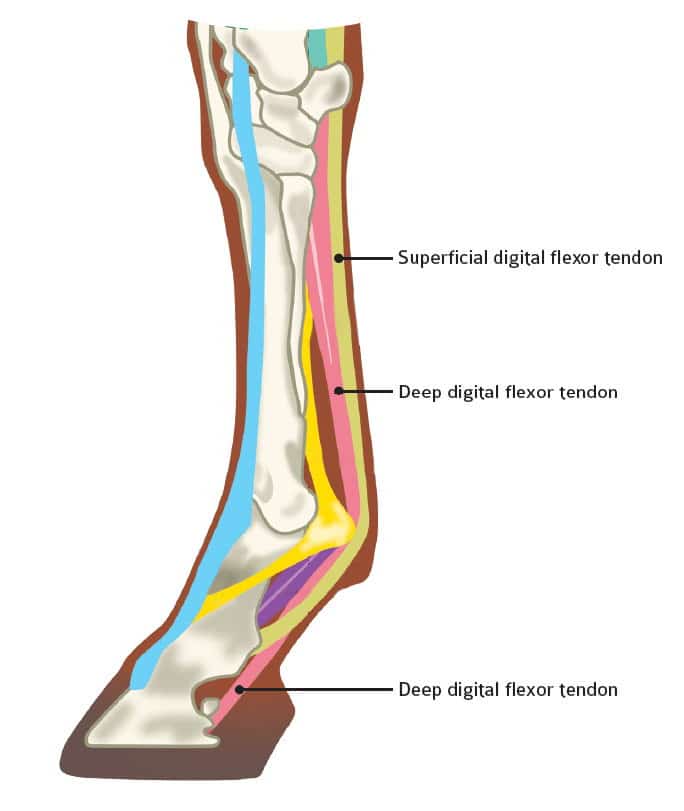
DDFT injuries are among the most severe that sport horses can endure and can result in a nine to twelve-month rehabilitation process.
The deep digital flexor tendon (DDFT) gives a horse its support and positioning in the foot. In adult horses, the tendon runs down the back of the leg and behind the heel, attaching to the bottom of the coffin bone. It can take a long time for a horse to get back into form after a tear.
The Equestic SaddleClip usually detects bigger deviations in both ‘Symmetry of Landing’ and ‘Symmetry of Push-off’ and they will show in the Equestic App .
Like any injury, patience is the key to a full and healthy recovery. Hand-walking and shoeing changes can help your horse in the meantime. A veterinarian may offer an injection of anti-inflammatory medications if the issue is identified as tendinitis. There are many specialized rehab clinics to assist in controlled recovery.
Sore Muscles
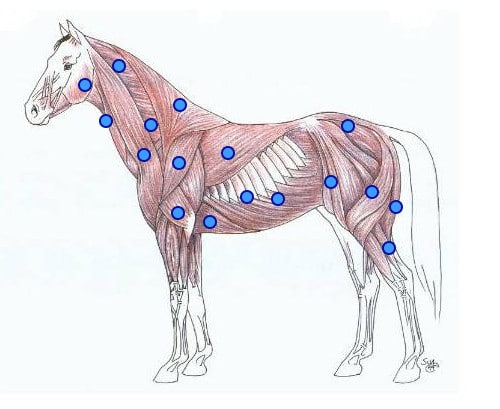
Sore muscles are common when a horse is not able to use it’s body correctly. Too much muscle tension, not being straight, over-training or maybe a poor-fitting saddle can be several causes.
There are many variations possible in this category. Typically Rhythm, Impulsion and Symmetry will show increasing irregular patterns and deviations in the Equestic App.
One way to look for soreness is by moving your hands and fingers as you groom. If your horse flinches, wrings the tail, or pins back the ears when pressure is placed on an area, the muscles may be sore.
A good physiotherapist can treat muscle soreness but the key is to find the root cause of the discomfort. Make sure your saddle fits perfectly and don’t shy away from looking at your own riding and training regime. Consult a professional trainer to make sure you train your horse the right way.
In all cases: Don’t ignore the warning signs!
Prevent high treatment costs by recognizing potential injuries in an early stage. By taking action early treatment costs will be reduced, and recovery time will be shorter. Your horse will thank you too.
Do not assume that it will all heal without action. When in doubt, at least give your horse a couple of days rest. The SaddleClip will show you if it has or has not improved after that.
The Equestic SaddleClip is not a medical device. Make sure you always contact a certified professional to help.








